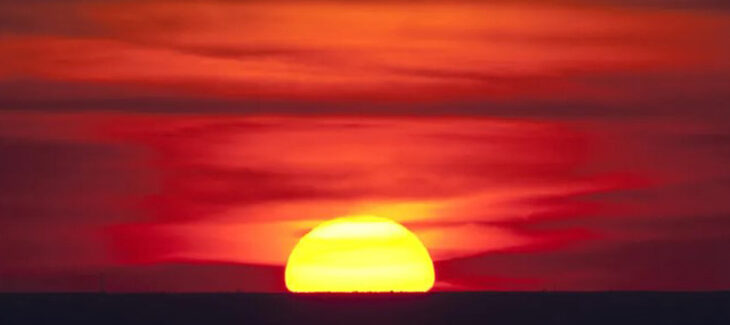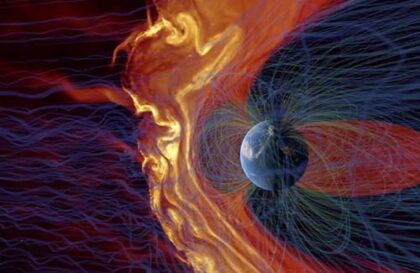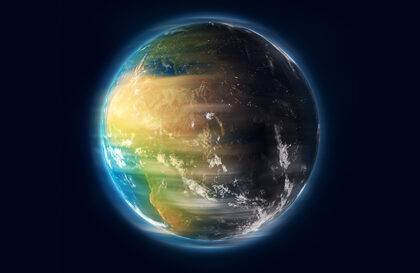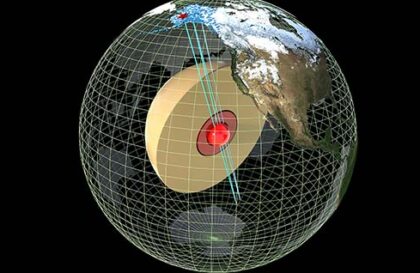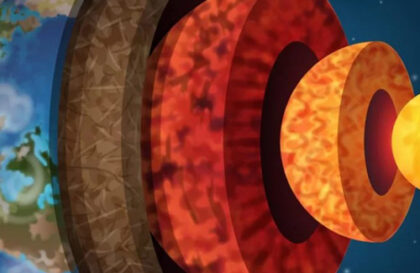Great illusionist
One of Mother Nature’s favorite tricks is refraction – bending light as it passes from one substance to another.
It is responsible for various optical phenomena, including rainbows, mirages, halos, and sun dogs. This is also why we see the oblate shape of the disks of the Sun and Moon at the horizon, the twinkling of stars, and the trembling of distant earthly objects on a hot day.
Refraction creates unique and mysterious optical phenomena:
- False Sun. In cold areas, a phenomenon can be observed where two or even three “suns” are visible in the sky. This phenomenon is called parhelium and is the result of the refraction of sunlight in atmospheric ice.
- Blue ocean. Many people think the sea or ocean is blue because of the sky’s reflection. Water absorbs red, orange, and yellow tones and reflects blue and green tones, which, combined with refraction, creates blue.
- Green flash. In rare conditions, when the sun sets, you can see a short, instantaneous glow of green color. This moment lasts only a few seconds and is caused by the refraction of light in the atmosphere.
Green flash at the top of the setting sun. Credit: willgaterastrophotography.com
- Broken rays. Under certain conditions, when light rays are refracted multiple times, you can see the sun’s rays bend, creating the appearance of “broken” rays in the sky.
- Migrating stones. In some areas, such as Death Valley in the US, rocks appear to move on the ground for no apparent reason. One theory for this phenomenon is that a thin layer of ice under the stone refracts light, creating the illusion of movement.
Mechanics of refraction
Light waves bend when passing between media of different densities. This phenomenon is called refraction. The angle at which a beam of light strikes the interface between two media affects the degree to which it bends. If the beam falls perpendicular to the boundary of the media, it does not change direction. The angle formed between the refracted ray and the normal to the surface is called the angle of refraction.
Astronomical refraction
When light from space, such as the Sun, passes through the Earth’s atmosphere, it causes atmospheric refraction. It differs from terrestrial refraction, associated with light sources on Earth. Since the atmosphere’s density decreases with altitude, light from space is refracted many times.
Credit: Time and Date
The upward shift of the Sun is a brilliant illusion of nature
When light rays enter the Earth’s atmosphere vertically, their trajectory does not change. But rays coming at an angle bend to follow the contours of the Earth. This creates the illusion that objects on the horizon are higher than they are.
This is especially noticeable at sunrise and sunset: due to refraction, the Sun appears above the horizon even when it is actually behind it. Consequently, on the days of the equinoxes, the duration of daylight exceeds 12 hours.
Temperature and pressure also affect the degree of refraction: light bends more at low temperatures and high pressure. If you are watching the sunset in an area of high pressure on a cold day, you may have to wait a few seconds for the top of the sun to disappear below the horizon compared to a day with average pressure and temperature.
Banner image: Vivid sunset over NASA’s Kennedy Space Center in Florida (U.S.). The stunning colors result from particles in the atmosphere scattering light from the Sun. When there are more particles in the air, more light is scattered, and the colors are enhanced. Credit: UCAR
Image credit:
https://scied.ucar.edu
https://www.willgaterastrophotography.com
https://www.timeanddate.com
